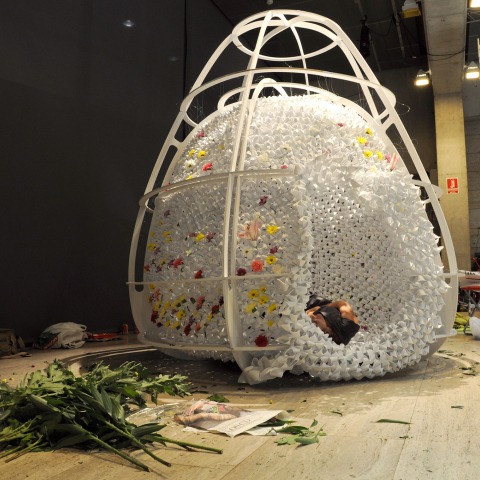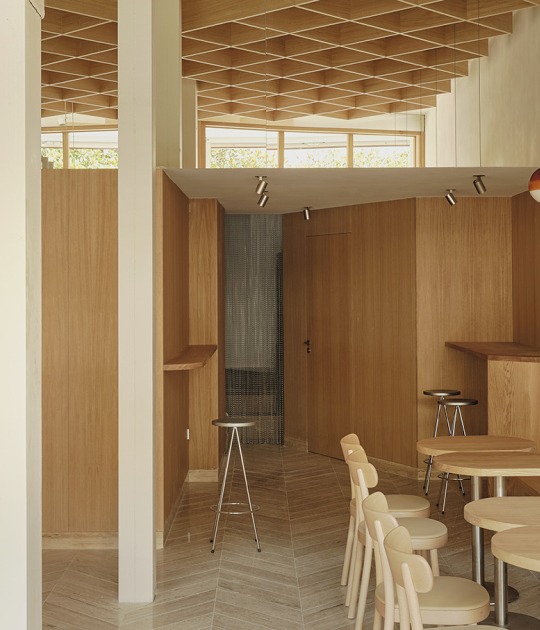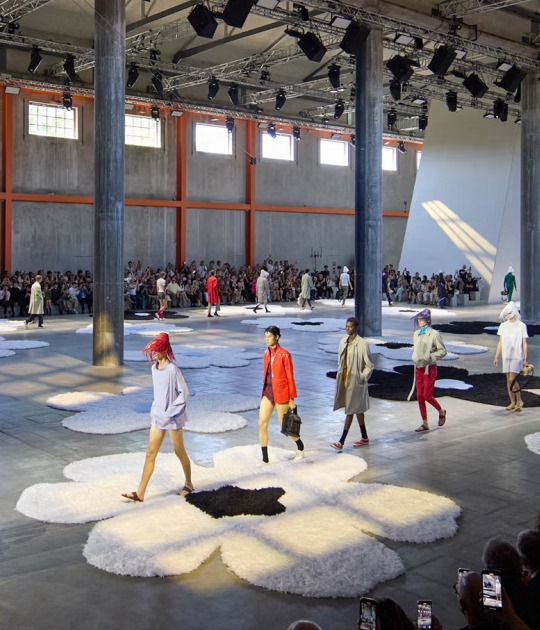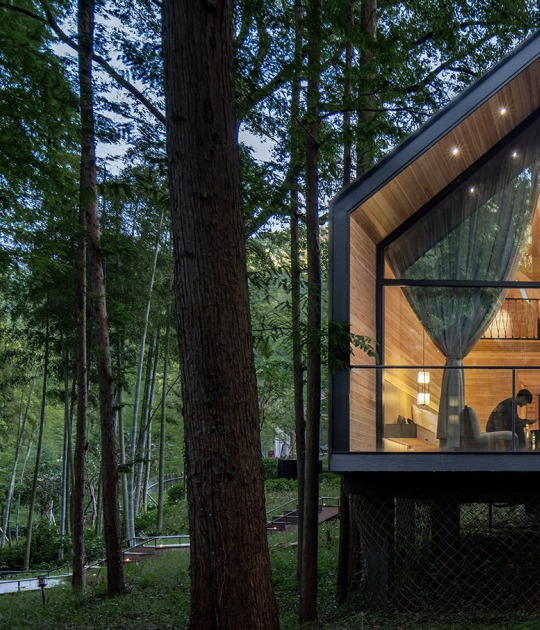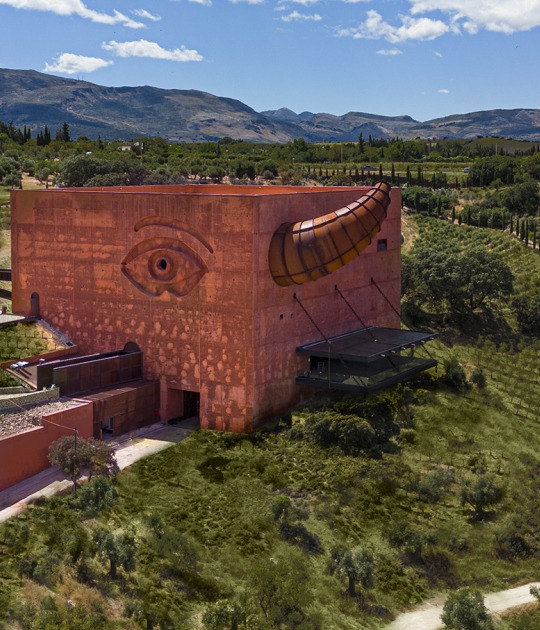FORM, ENERGY AND FLOWERS
Yes, we could start, for example, telling that the project creates a circular space, a space where one can come in and simply experiment with different sensations, through sight, touch and smell. We could explain that it was built for an Architecture Festival in Barcelona, though that is not the point, but it is certainly important that it only “lived” for 3 days. Because, instead of being a barrier, the fact that it would only last a very short amount of time and the fact that it was surrounded by such different elements, turned into an opportunity to deal with things that we are not used to deal with: Light and slight things, almost evanescent.
Therefore, we could also say that the project was configured through the articulation of three different spaces that made emerge the final project volume. Anyone that would get close to it, the first thing he would see would be an oval shape, deformed from one of its limits, and once inside, he would find another shape, that would also be circular, but quite smaller, noticing thus that in between of these two shapes there would be a third space that would absorb the differences. We would explain that this intermediate space contained the aromatic species and the surrounding smell, and that, thanks to this space, the light flooded the interior, so that One wouldn’t exactly know where the light was coming from, as it happens in Borromini’s architecture. It would seem that the light would come from everywhere, and then we could explain that this just happened because the project was just a “fabric” made out of a repetition of pieces, organized in a certain way, that created a net that tended to close in itself.
We could also explain how it was built. During a hole week we mixed digital and manual crafting, and thanks to this, we could focus on the specific, on a more free way, in order to end up at the same point on which we began this memory, referring to the circularity of the project, the circularity that defines the proposal and that allows us to arrive the point on which the limits are so blurred that we cannot tell what came out before: Form or use, space or structure, interior or exterior.
There are many ways of doing architecture, - there are also many ways to start and end a memory-, but in this case what is important is just that, as in this memory, it is circular.
CREDICTS:
Architects: takk // mireia luzárraga + alejandro muiño.
TECHNICAL DESCRIPTION:
The walls are coming down is a double skin made out of 5553 white foam pieces manually cut and glued around 35000 times. This skin is colonized by 3 different kinds of flowers: 350 daisies, 60 lilies and 150 carnations that are woven with 50m of nylon thread and sewed surrounding a 48 pieces structure made out of lacquered wood. These pieces are assembled and form 6 horizontal sections and 6 vertical sections.
Acknowledgements: Alberto T. Estévez, Enric Ruiz Geli, and the Digital Fabrication Laboratory ESARQ-UIC
